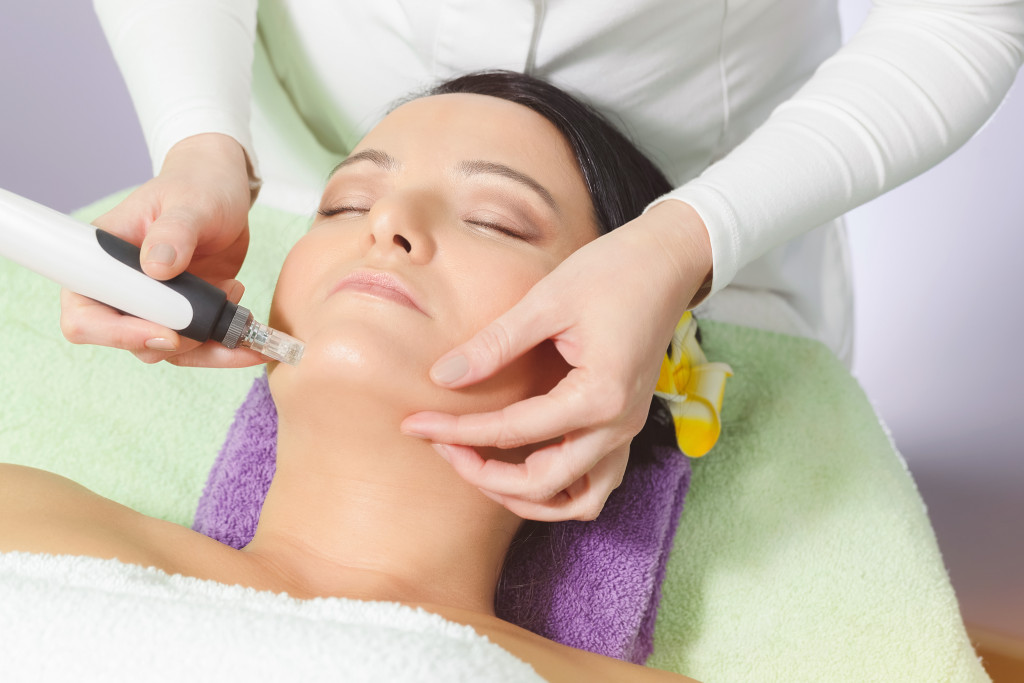It’s hard to feel confident when you have scars all over your body. They can be a constant reminder of something that you would rather forget. And for some people, the emotional toll of scars can be too much to bear.
Thankfully, there are treatments available that can help lessen the appearance of scars and improve your confidence. Keep reading for more information about treating scars and how to get started.
1. Talk to Your Doctor About Your Treatment Options
If you’re looking for treatment options for your scars, the best thing to do is talk to your doctor. They can help you determine the best course of action for your specific situation and may be able to recommend treatments that you haven’t considered. They can also explain the possible risks and side effects associated with various treatments.
You can discuss the scars right after the surgery, for example, or after a few weeks or months, when the wound is finally healed. During the meeting, it’s a good idea to write down any questions you have so that you won’t forget anything. These include:
- What type of scar is it?
- How old is the scar? Has it been changing over time?
- Is there anything I can do to prevent a new scar from forming?
- What about if the scar has already formed? What treatment options does my doctor recommend for this particular type of scar?
- Will my insurance cover any of these treatments?
To evaluate the scars properly, the doctor will need to see them in person. If they are not visible, the doctor may ask for photos of the scar or request that you undress so they can have a look.
Feel comfortable asking questions at your appointment. You should never be afraid or embarrassed about discussing your scars with your doctor. They are there to help.
2. Try Topical Treatments
If your scars are only slightly visible, one of the simplest treatments available is topical treatment with vitamin E oil or cocoa butter moisturizing cream. This type of treatment works by providing moisture to the area, which helps fade scars over time.
You can also apply it on older scars that are raised to help even out the texture of the scar and make it less noticeable.
Make sure you apply your treatment in a thin layer directly onto the areas where you have scars several times each day. Do not rub it in. Allow it to fully absorb before applying more. For even better results, moisten the skin (by taking a shower, for example) before applying your cream or oil.
3. See an Expert Dermatologist

If you’ve tried various home treatments and they haven’t worked, consider seeing a dermatology expert to get rid of your scars. Specialized dermatologists offer a variety of treatments that can reduce the appearance of scars, including:
- Dermabrasion. In this treatment, a dermatologist uses a special tool that buffs away scar tissue to create a smoother skin surface with fewer visible scars. Dermabrasion is typically very effective on lighter scars from old wounds.
- Laser. Laser therapy is a type of treatment that uses high-energy light to destroy abnormal scars and collagen in the skin. By doing so, it reduces the appearance of raised areas and improves the overall quality of the skin. A dermatologist would use a laser scar removal machine for sale to do the job.
- Cryosurgery. This treatment uses an extremely cold machine that vaporizes portions of the skin, which reduces scar tissue and destroys collagen in affected areas. It should not be used on scars that are still healing because it could damage the surrounding tissues. Dermabrasion is usually performed immediately before cryosurgery to prepare the skin for the procedure.
4. Try an Acne Scar Treatment Cream
If you have acne scars, you may want to try an acne scar treatment cream in addition to your other treatments to see if it makes a difference. These creams typically contain chemicals or special ingredients that help improve the appearance of the skin and reduce the appearance of scars by lightening them and smoothing out their surface texture.
If you choose to use an acne scar treatment cream, remember that they take up to six months or longer to work. You usually see the best results after using a cream for at least three months.
5. Consider Surgery
Surgery is another viable option for getting rid of scars, especially if they are already severe. Surgery does have the potential to cause scarring in addition to treating it, however, so this option should be considered last after all others have been tried.
Before surgery, make sure you are completely healed from all previous treatments and that your doctor has taken the time to carefully assess your scars. If you are considering surgery, keep the following tips in mind:
- Ask your doctor about different scar repair procedures that can help to smooth out your skin and remove imperfections. Sometimes surgical excision (removal of excess skin) is necessary to improve the appearance of scars.
- Make sure you understand all possible risks associated with the procedure, including infection, bleeding, and the potential for scar tissue to form.
- See to it that your surgeon is board-certified by the American Board of Plastic Surgery. They should have undergone extensive training in plastic surgery after receiving their medical degree. Also, check that they are affiliated with a reputable hospital or clinic.
Usually, scars don’t disappear. But these tips will help lessen their appearance over time, so you will feel more confident.





